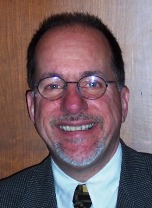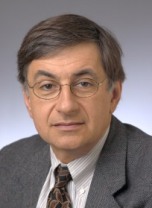The second in a series examining the progress of national health care reform in the wake of the presidential election.
 |
|
| Dennis Dimitri, MD, FAAFP | |
 |
|
| Daniel H. Lasser, MD, MPH |
Long regarded as one of the least glamorous and lowest-paid of the medical specialties, primary care is getting new recognition as the bedrock of health care reform. “To get our costs under control, we must shift to a more robust primary–care centered health care delivery system,” said Dennis Dimitri, MD, FAAFP, vice chair and clinical associate professor of family medicine & community health. But the number of students choosing primary care has dropped dramatically in the last decade. “It’s urgent that we address this problem as quickly as possible,” he said.
Primary care practitioners (PCPs) can improve care and reduce costs by encouraging prevention, helping patients address serious conditions early and discouraging unnecessary tests and treatments. But the ratio of other specialists to PCPs has been steadily rising in the United States—today the ratio is 70 percent specialists to 30 percent PCPs—leading many to worry about a potential shortage. “The evidence is clear,” said Daniel H. Lasser, MD, MPH, professor of family medicine & community health. “Regions with more primary care doctors have lower costs and better outcomes.” The ideal ratio, according to Dr. Lasser, is 50 percent specialists to 50 percent primary care.
Some experts have suggested that rising educational debt is fueling the problem. Higher debt levels, they argue, could lead students to worry about financial stability. A recent study out of Boston University challenges this position. Using financial modeling, the researchers showed that despite growing levels of student debt, most medical school graduates could still pay off their loans and live comfortably on a PCP’s salary.
So what’s keeping students away? A big issue, Lasser said, is how we pay for medical services. Doctors are paid per service provided, not on the amount of time they spend on a particular case. “When you pay per service, and you pay a lot less for primary care-related tasks to begin with, the PCPs have to keep seeing more and more patients to stay ahead,” he explained. Hence, the infamous 15-minute doctor visits so common among today’s family physicians. “Students perceive that primary care is about cranking out patient visits, and that is not appealing,” he added.
That would change if PCPs were paid more fairly for tasks that require extra time, such as annual wellness checks or intensive management of complex patients, Dimitri and Lasser agreed. Both physicians are on the front lines of primary care education, training and reform. UMMS is consistently ranked among the nation’s top primary care programs by U.S. News and World Report, and the school’s clinical partner, UMass Memorial Health Care, is taking a leading role testing primary care reform programs as part of Massachusetts’ pioneering health law.
The Affordable Care Act (ACA) also contains measures aimed at strengthening primary care. and with President Barack Obama’s re-election, there is greater likelihood that more of those measures will be tested and possibly made into law.
Two of the most talked-about efforts are Accountable Care Organizations (ACOs) and Patient Centered Medical Homes (PCMHs). Both aim to redesign health care delivery and reimbursement by better integrating care. But a key difference is that ACOs are essentially multiple organizations working together, and are accountable for delivering quality care at reasonable cost. If they generate the expected savings, they get to share in those savings. The PCMH, on the other hand, is a single organization built around the idea that better primary care improves outcomes. PCPs lead the care teams and are paid for services beyond the typical office visit, such as coordinating care across other providers. In some PCMHs, a single “bundled” or “global” payment is made for each care episode, instead of multiple payments to multiple providers.
“If the PCMH is the home where patients go to receive their primary care, then some would characterize an ACO as the medical neighborhood in which that home is located. The rest of the neighborhood contains the specialty and hospital care that patients may need to access upon referral by their PCP. All components of the ACO are linked together to make the neighborhood a better place to get your health care delivered in an effective and efficient manner,” said Dimitri.
Even in Massachusetts, which leads the country in health reform, these new models have only been tested in a few settings and for a short time. A recent review in the Annals of Internal Medicine took a comprehensive look at 19 studies of PCMHs done to date. The results were not very encouraging. There was a small improvement in patient experience, staff experience and delivery of preventive care, but there were no reductions in costs. The Annals study authors pointed out, however, that it’s especially difficult to evaluate new models of care, since people have different definitions of what these new terms even mean. Studies of ACOs, likewise, have been discouraging or ambiguous, leaving some to wonder if big changes are being made for little effect.
Lasser, however, argued that it will doubtless take more time to determine whether or not ACOs or PCMHs provide substantive cost savings, but these are still laudable endeavors that should be encouraged. “Continuously improving quality, better care coordination, patient-centered care, greater efficiency . . . Who wouldn’t be excited about being involved in efforts with goals like these?” he said.
It may be that to cut costs, providers need to look at the actual care they deliver, and not just how they deliver it. The new ACA-authorized Patient-Centered Outcomes Research Institute (PCORI) is funding 50 pilot projects to better assess particular medical interventions. “There is lots of funding available now to look at new, innovative ways of evaluating care,” says Dimitri. Notably, UMMS has received three pilot PCORI awards totaling more than $2 million, more than any other institution in the country.
Dimitri and Lasser are by no means sanguine about the future of primary care, but they see no choice but for continued effort at reform. “It has taken 100 years to build a system as broken as this one is,” said Lasser. “It’s going to take time and multiple tools to fix it.” Reversing the primary care/specialist imbalance must be a priority, they warned. “It typically requires seven years to train such clinicians,” Dimitri said. “Even if we widen the pipeline, it’s going to take a long time to make noticeable progress.”